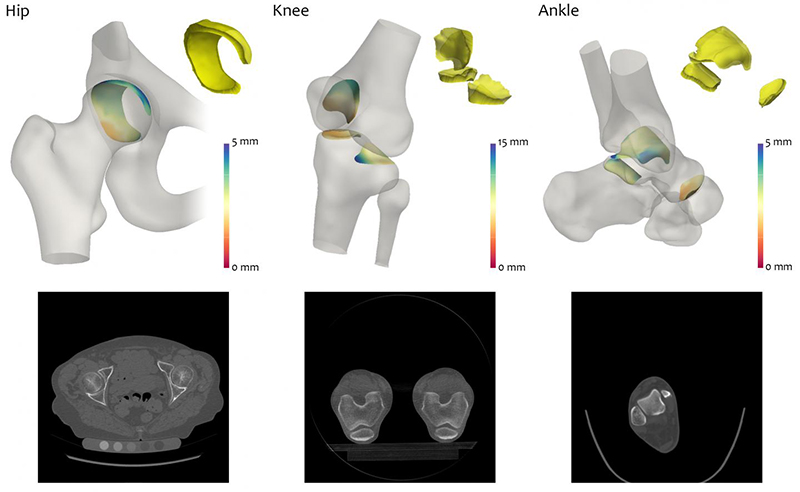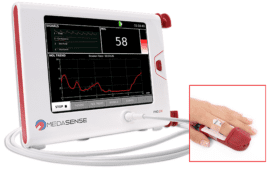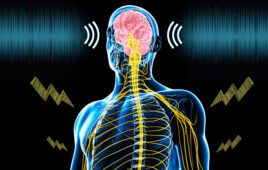An algorithm to monitor the joints of patients with arthritis, which could change the way that the severity of the condition is assessed, has been developed by a team of engineers, physicians and radiologists led by the University of Cambridge.
The technique, which detects tiny changes in arthritic joints, could enable greater understanding of how osteoarthritis develops and allow the effectiveness of new treatments to be assessed more accurately, without the need for invasive tissue sampling. The results are published in the journal Scientific Reports.
Osteoarthritis is the most common form of arthritis in the UK. It develops when the articular cartilage that coats the ends of bones, and allows them to glide smoothly over each other at joints, is worn down, resulting in painful, immobile joints. Currently there is no recognised cure and the only definitive treatment is surgery for artificial joint replacement.
Osteoarthritis is normally identified on an x-ray by a narrowing of the space between the bones of the joint due to a loss of cartilage. However, x-rays do not have enough sensitivity to detect subtle changes in the joint over time.
“In addition to their lack of sensitivity, two-dimensional x-rays rely on humans to interpret them,” said lead author Dr Tom Turmezei from Cambridge’s Department of Engineering. “Our ability to detect structural changes to identify disease early, monitor progression and predict treatment response is frustratingly limited by this.”
The technique developed by Turmezei and his colleagues uses images from a standard computerised tomography (CT) scan, which isn’t normally used to monitor joints, but produces detailed images in three dimensions.

Joint space in hip, knee and ankle joints as analyzed by the JSM algorithm. Credit: Tom Turmezei
The semi-automated technique, called joint space mapping (JSM), analyses the CT images to identify changes in the space between the bones of the joint in question, a recognised surrogate marker for osteoarthritis. After developing the algorithm with tests on human hip joints from bodies that had been donated for medical research, they found that it exceeded the current ‘gold standard’ of joint imaging with x-rays in terms of sensitivity, showing that it was at least twice as good at detecting small structural changes. Colour-coded images produced using the JSM algorithm illustrate the parts of the joint where the space between bones is wider or narrower.
“Using this technique, we’ll hopefully be able to identify osteoarthritis earlier, and look at potential treatments before it becomes debilitating,” said Turmezei, who is now a consultant at the Norfolk and Norwich University Hospital’s Department of Radiology. “It could be used to screen at-risk populations, such as those with known arthritis, previous joint injury, or elite athletes who are at risk of developing arthritis due to the continued strain placed on their joints.”
While CT scanning is regularly used in the clinic to diagnose and monitor a range of health conditions, CT of joints has not yet been approved for use in research trials. According to the researchers, the success of the JSM algorithm demonstrates that 3D imaging techniques have the potential to be more effective than 2D imaging. In addition, CT can now be used with very low doses of radiation, meaning that it can be safely used more frequently for the purposes of ongoing monitoring.
“We’ve shown that this technique could be a valuable tool for the analysis of arthritis, in both clinical and research settings,” said Turmezei. “When combined with 3D statistical analysis, it could be also be used to speed up the development of new treatments.”




